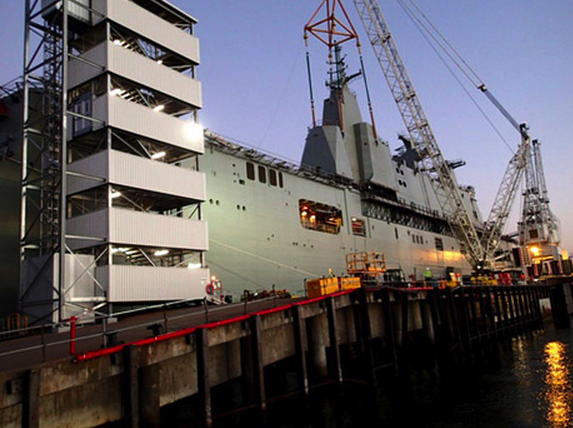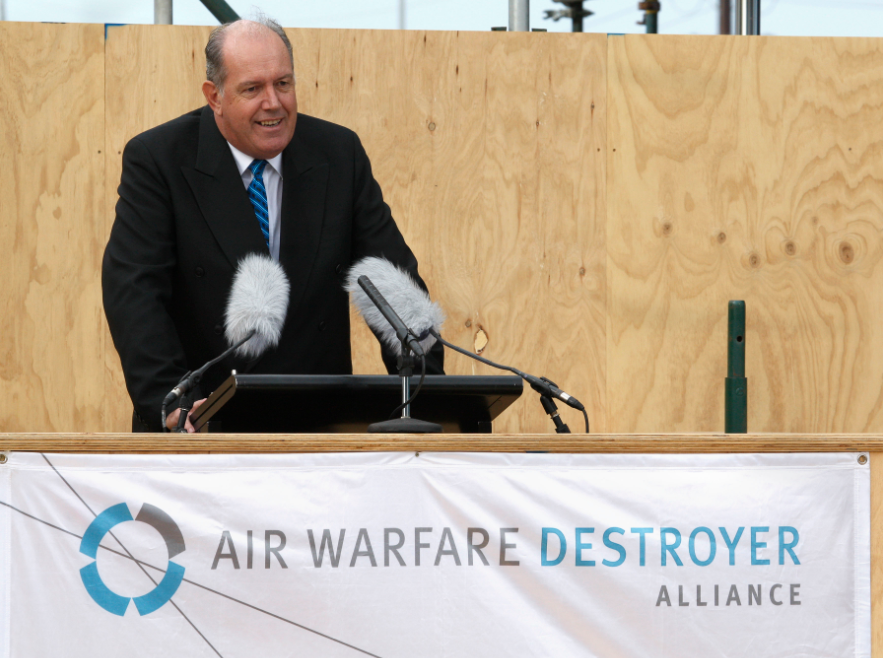14,000 sounds like a lot—down to the docks again
Earlier this week, The Australian ran a story about delays in the construction of the Navy’s new amphibious ships. At first blush, it looked like a familiar story of poor shipyard performance, with 14,000 defects found in the HMAS Canberra, the first of the two new LHDs, resulting in a delivery delay of seven months. As the newspaper pointed out, the problems come at a bad time for the Australian shipbuilding industry, after a critical report on the air warfare destroyer project and a government decision to outsource the construction of two new replenishment ships to overseas companies:
They come at a time when the Abbott government appears to be paralysed with indecision about how to proceed with the country’s largest defence project, the $36bn construction of up to 12 submarines in Adelaide.
The delay in the completion of HMAS Canberra at Melbourne’s Williamstown shipyards has disappointed Defence, which says low productivity, poor skills and a shortage of trained supervisors has combined to delay the delivery of the ship until later this year.







